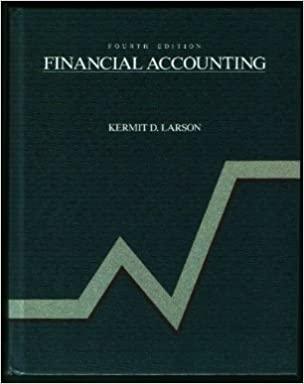


Rail efficiency analysis case study: Styles 1 See the attached chart of operating results for Amtrak Figure 2. Amtrak Ratio of Revenues to Expenses, 1995-2016 (total revenues/total expenses) 100% 95% 90% 85% 80% 75% 705 6590 OS 2005 2004 2002 2003 2001 2999 2000 1998 1997 1996 2007 2006 0 995 2010 1106 2012 102 2015 2014 2016 2009 50% 2005 2015 2014 2013 2008 2006 2007 2016 2009 2010 2011 2012 Source: Calculated by CRS using data from Amtrak annual reports and financial statements. Notes: The spike around FY1998-FY1999 was due to a change in the way Amerak accounted for federal and state grants. Without that change, Amtrak's ratio would have been 67% in FY1998 and 68% in FY1999. 1995 1996 1997 1998 1999 2000 2001 2002 2003 2004 a Does this chart graph the operating ratio for Amtrak? Explain. b. Compute the 2018 and 2019 operating ratio for Amtrak based on the table below." c. Did Amtrak's efficiency improve or decline between 2018 and 2019? Explain d. A search of the Amtrak annual report for the term "operating ratio results in 0 hits. If this is such an important measure of operating performance that even the Indian National Railways track OR, why do you think Amtrak does not provide this information e. What do you think should be done about Amtrak and its losses? National Railroad Passenger Corporation and Subsidiaries (Amtrak) Consolidated Statements of Operations (In Thousands of Dollars) Year Ended September 30, 2019 2018 S Revenues: Passenger related Other Total revenues 2666,591 S 2,581,740 836,924 804,993 3.503.515 3,386,733 Expenses: Salaries, wages, and benefits Train operations Fuel, power, and utilities Materials Facility, communication, and office related Advertising and sales Casualty and other claims Depreciation and amortization Other Indirect cost capitalized to property and equipment Total expenses Loss before other income) and expense 2,167,838 306,578 260,208 187,374 181,625 99,503 65.627 870,193 412.242 (154,440) 4,396,748 893.233 2,020,565 299,956 269,811 178,475 178,782 93,227 119,374 807,122 422.935 (151.296) 4,238,951 852.218 Other (income) and expenses Interest income Interest expense Other income, net Other (income) expense, net Lone before income taxes income tax benefit Nch (51.415) 40.770 (1.672) (12.317) 880,916 (20,837) 44,509 (5 526) 18.146 870 364 453,139) 8171205 880.916 5 Rail efficiency analysis case study: Styles 1 See the attached chart of operating results for Amtrak Figure 2. Amtrak Ratio of Revenues to Expenses, 1995-2016 (total revenues/total expenses) 100% 95% 90% 85% 80% 75% 705 6590 OS 2005 2004 2002 2003 2001 2999 2000 1998 1997 1996 2007 2006 0 995 2010 1106 2012 102 2015 2014 2016 2009 50% 2005 2015 2014 2013 2008 2006 2007 2016 2009 2010 2011 2012 Source: Calculated by CRS using data from Amtrak annual reports and financial statements. Notes: The spike around FY1998-FY1999 was due to a change in the way Amerak accounted for federal and state grants. Without that change, Amtrak's ratio would have been 67% in FY1998 and 68% in FY1999. 1995 1996 1997 1998 1999 2000 2001 2002 2003 2004 a Does this chart graph the operating ratio for Amtrak? Explain. b. Compute the 2018 and 2019 operating ratio for Amtrak based on the table below." c. Did Amtrak's efficiency improve or decline between 2018 and 2019? Explain d. A search of the Amtrak annual report for the term "operating ratio results in 0 hits. If this is such an important measure of operating performance that even the Indian National Railways track OR, why do you think Amtrak does not provide this information e. What do you think should be done about Amtrak and its losses? National Railroad Passenger Corporation and Subsidiaries (Amtrak) Consolidated Statements of Operations (In Thousands of Dollars) Year Ended September 30, 2019 2018 S Revenues: Passenger related Other Total revenues 2666,591 S 2,581,740 836,924 804,993 3.503.515 3,386,733 Expenses: Salaries, wages, and benefits Train operations Fuel, power, and utilities Materials Facility, communication, and office related Advertising and sales Casualty and other claims Depreciation and amortization Other Indirect cost capitalized to property and equipment Total expenses Loss before other income) and expense 2,167,838 306,578 260,208 187,374 181,625 99,503 65.627 870,193 412.242 (154,440) 4,396,748 893.233 2,020,565 299,956 269,811 178,475 178,782 93,227 119,374 807,122 422.935 (151.296) 4,238,951 852.218 Other (income) and expenses Interest income Interest expense Other income, net Other (income) expense, net Lone before income taxes income tax benefit Nch (51.415) 40.770 (1.672) (12.317) 880,916 (20,837) 44,509 (5 526) 18.146 870 364 453,139) 8171205 880.916 5









